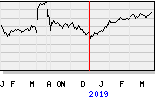
•Personalized environment offers positive distraction and active relaxation to help reduce stress and calm patients before and after medical procedures
•Different ambience modes support nurses through each step in the clinical workflow
Amsterdam, the Netherlands and Andover, U.S. – Royal Philips (NYSE: PHG, AEX: PHIA), a global leader in health technology, today announced the introduction of its Ambient Experience preparation & recovery bay in the U.S. Combining the creative use of colored dynamic lighting and video, this new offering provides patients with a uniquely personalized environment that delivers positive distraction and active relaxation to reduce pre-operative stress and enhance the post-operative recovery environment. At the same time, different ambient lighting modes support nursing staff through each step in the workflow from arrival and preparation to the recovery bay and housekeeping. The Ambient Experience preparation & recovery bay will be rolled out to other markets next year.
Patients often experience high levels of stress prior to a medical procedure, particularly a cardiac catheterization [1,2,3]. Invasive procedures requiring full anesthesia can also cause considerable psychological distress, as can non-invasive scans that may result in the diagnosis of serious illness. Stress occurs for reasons such as the anticipation of discomfort and pain, separation from the patient’s family, loss of independence, or fear of the procedure itself. Conventional pre-operative preparation and post-operative recovery rooms do little to alleviate the situation. They are typically cluttered with medical equipment designed to meet the requirements of clinicians rather than patients. Yet calm, relaxed cooperative patients are known to result in better outcomes, clearer medical images, and faster procedures [4]. There is therefore a real need for perioperative environments that help to reduce patient stress as much as possible.
“The fear and stress of undergoing surgery is something we can all relate to even if it’s not happening to us personally,” said Werner Satter, Business Leader Healthcare Experience Solutions for Philips. “That’s why at Philips we believe that shaping the patient experience by creating a calmer, less intimidating environment is one of the best ways of helping people at a point in their lives when they need it most. Ever since the commercial introduction of our Ambient Experience concept in 2006, we have seen that a purposefully designed patient-centric environment can make a real difference to a patient’s experience and state-of-mind, with the cumulative effect of helping hospitals to improve their workflow and improve staff satisfaction.”
The Philips Ambient Experience preparation & recovery bay solution allows patients to select different ambience settings contributing to positive distraction and active relaxation. At the same time, the solution reduces the impact of medical technology through integration into the sidewalls, where it is illuminated with task lighting only when needed. Task lighting is also provided for dealing directly with the patient to carry out procedures such as cannula insertion. Bright light supports hospital staff when making the bay ready for the next patient. Philips’ solution therefore adapts to all four phases of the bay’s workflow: patient arrival, preparation, recovery, followed by housekeeping.
Setting new standards in patient-centric hospital suite designs
The Ambient Experience preparation & recovery bay is the latest addition to Philips’ highly innovative patient-centered Ambient Experience portfolio. With more than 1,250 Ambient Experience installations worldwide, Philips is setting new standards in patient-centric hospital suite designs that help to improve the experience of the patient, their family and staff. The portfolio includes offerings for radiology, cardiology, oncology and emergency departments, and (neonatal) intensive care units. An example is Philips’ Ambient Experience in-bore Connect solution for the company’s MRI scanners. As a positive example of the benefits these patient calming solutions can achieve, a recent study at Herlev Gentofte University Hospital in Denmark revealed that the average number of MR re-scans decreased by 70% when using in-bore Connect [4]. As part of its mission to improve the lives of 3 billion people a year by 2025, Philips continues to pioneer hospital solutions that focus on the needs of patients and contribute to better outcomes.
[1] Carroll, Diane L., et al., Non-pharmacological interventions to reduce psychological stress in patients undergoing diagnostic cardiac catheterization: a rapid review, European Journal of Cardiovascular Nursing. 2017, Vol. 16(2) 92-103 ©The European Society of Cardiology.
[2] Nekouei, Zohreh Khayyam, et al., Comparing anxiety in cardiac patients candidate for angiography with normal population. ARYA Atherosclerosis Journal 2011. 7(3): 93-96.
[3] Delewi, Ronak, et al., Anxiety levels of patients undergoing coronary procedures in the catheterization laboratory. International Journal of Cardiology. 228 (2017) 926-930.
[4] Compared to the average of the other five Philips MR scanners without Ambient Experience and In-bore Connect. Results from case studies are not predictive of results in other cases. Results in other cases may vary.
